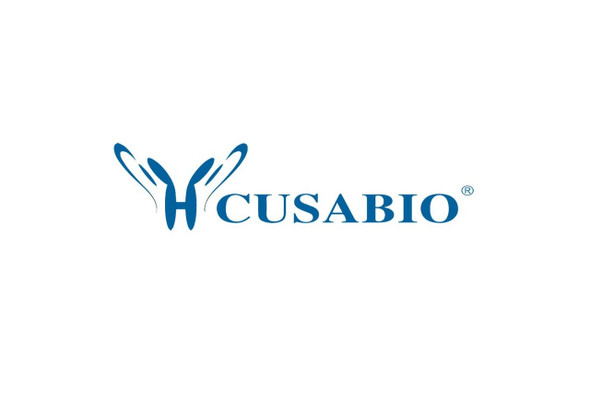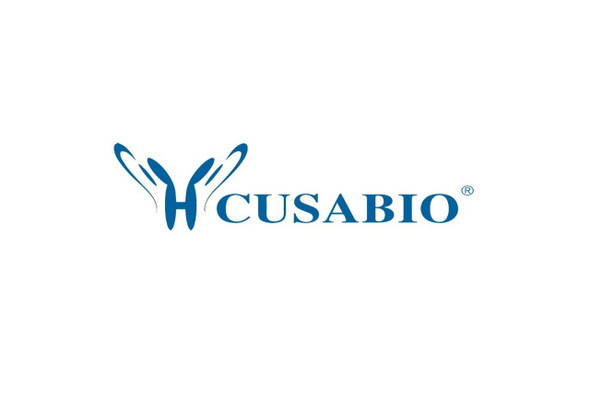Cusabio Active Proteins
Recombinant Human Plasminogen protein (PLG) (Active) | CSB-AP002261HU
- SKU:
- CSB-AP002261HU
- Availability:
- 5 to 10 Working Days
Description
Recombinant Human Plasminogen protein (PLG) (Active) | CSB-AP002261HU | Cusabio
Protein Description: Partial
Alternative Name (s) : EC 3.4.21.7,
Gene Names: PLG
Research Areas: Cancer
Species: Homo sapiens (Human)
Source: E.Coli
Tag Info: Tag-Free
Expression Region: 98-356aa
Sequence Info: VYLSECKTGN GKNYRGTMSK TKNGITCQKW SSTSPHRPRF SPATHPSEGL EENYCRNPDN DPQGPWCYTT DPEKRYDYCD ILECEEECMH CSGENYDGKI SKTMSGLECQ AWDSQSPHAH GYIPSKFPNK NLKKNYCRNP DRELRPWCFT TDPNKRWELC DIPRCTTPPP SSGPTYQCLK GTGENYRGNV AVTVSGHTCQ HWSAQTPHTH NRTPENFPCK NLDENYCRNP DGKRAPWCHT TNSQVRWEYC KIPSCDSSP
Biological Activity: Fully biologically active when compared to standard. The specific activity determined by an assay on anti-proliferation and anti-migration using endothelial cells in vitro and anti-angiogenesis in vivo is 5.5 × 105 IU/mg.
MW: 29.7 kDa
Purity: >95% as determined by SDS-PAGE and HPLC.
Endotoxin: Less than 1.0 EU/µg as determined by LAL method.
Relevance: Plasmin dissolves the fibrin of blood clots and acts as a proteolytic factor in a variety of other processes including embryonic development, tissue remodeling, tumor invasion, and inflammation. In ovulation, weakens the walls of the Graafian follicle. It activates the urokinase-type plasminogen activator, collagenases and several complement zymogens, such as C1 and C5. Cleavage of fibronectin and laminin leads to cell detachment and apoptosis. Also cleaves fibrin, thrombospondin and von Willebrand factor. Its role in tissue remodeling and tumor invasion may be modulated by CSPG4. Binds to cells. {ECO:0000269|PubMed:14699093}.; Angiostatin is an angiogenesis inhibitor that blocks neovascularization and growth of experimental primary and metastatic tumors in vivo. {ECO:0000269|PubMed:14699093}.
PubMed ID: 2318848; 3030813; 14574404; 15489334; 122932; 6148961; 126863; 142009; 4694729; 4240117; 6919539; 6094526; 9201958; 3356193; 9102401; 9054441; 7525077; 9102221; 9548733; 10077593; 10889192; 14699093; 16043488; 18780401; 2143188; 19712047; 24275569; 1657148; 1657149; 8054447; 8611560; 15299951; 9783753; 9521645; 10656799; 11350170; 12054798; 12456874; 15211511; 23335990; 2157850; 8181475; 8181476; 8652577; 9305949; 1986355; 8392398; 6216475; 6238949; 1427790; 9242524; 9858247; 10233898
Notes: Repeated freezing and thawing is not recommended. Store working aliquots at 4℃ for up to one week.
Function: Plasmin dissolves the fibrin of blood clots and acts as a proteolytic factor in a variety of other processes including embryonic development, tissue remodeling, tumor invasion, and inflammation. In ovulation, weakens the walls of the Graafian follicle. It activates the urokinase-type plasminogen activator, collagenases and several complement zymogens, such as C1 and C5. Cleavage of fibronectin and laminin leads to cell detachment and apoptosis. Also cleaves fibrin, thrombospondin and von Willebrand factor. Its role in tissue remodeling and tumor invasion may be modulated by CSPG4. Binds to cells.
Involvement in disease: Plasminogen deficiency (PLGD)
Subcellular Location: Secreted
Protein Families: Peptidase S1 family, Plasminogen subfamily
Tissue Specificity: Present in plasma and many other extracellular fluids. It is synthesized in the liver.
Paythway: Complementandcoagulationcascades
Form: Lyophilized powder
Buffer: Lyophilized from a 0.2 μm filtered 20 mM NaAc, pH 5.5, 4 % mannitol
Reconstitution: We recommend that this vial be briefly centrifuged prior to opening to bring the contents to the bottom. Please reconstitute protein in deionized sterile water to a concentration of 0.1-1.0 mg/mL.We recommend to add 5-50% of glycerol (final concentration) and aliquot for long-term storage at -20℃/-80℃. Our default final concentration of glycerol is 50%. Customers could use it as reference.
Uniprot ID: P00747
Uniprot Entry Name: PLMN_HUMAN
HGNC Database Link: HGNC
UniGene Database Link: UniGene
KEGG Database Link: KEGG
STRING Database Link: STRING
OMIM Database Link: OMIM









